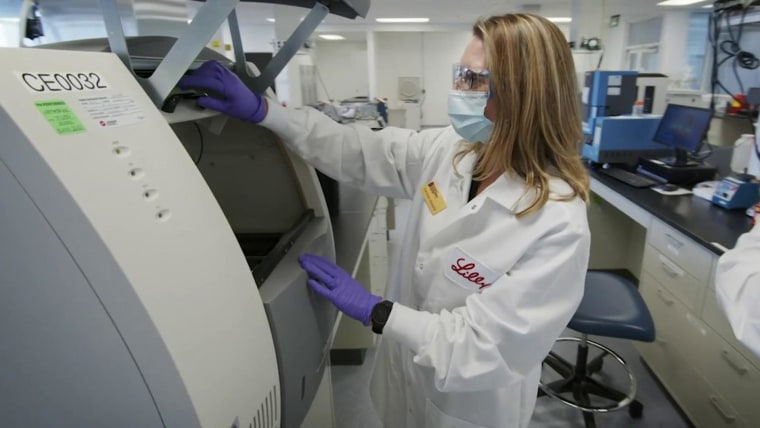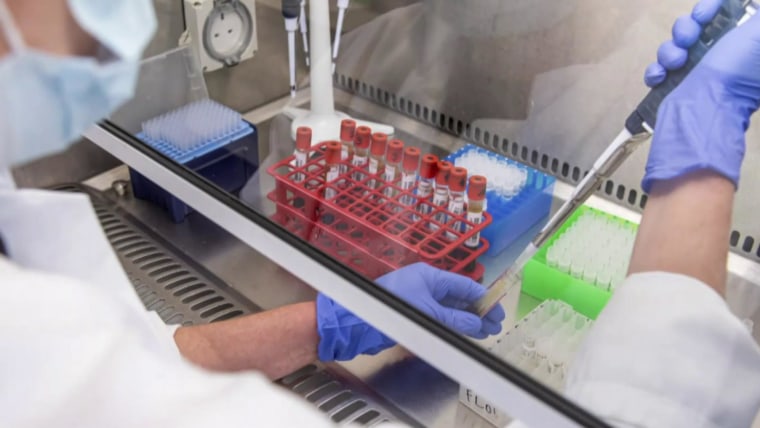With the world waiting for a coronavirus vaccine, scientists know the stakes could not be higher.
Three vaccines are currently in phase 3 of human clinical trials that ensure effectiveness but also safety — a crucial element as an accelerated timeline, mounting cases and deaths and no shortage of misinformation have added enormous pressure to the process.
Any approved vaccine will be the subject of intense scrutiny.
“There’s a real danger in approving a vaccine that doesn’t work well enough,” said Natalie Dean, an assistant professor of biostatistics at the University of Florida in Gainesville. “We have to do it right the first time. The public trust is very important in the long term, and people need to be confident that it’s an adequately effective product.”
All vaccines are thoroughly tested before receiving final approval, with a new vaccine typically taking around 10 years to go through the development and testing stages. That includes extensive testing to ensure side effects are minimal.
But the coronavirus vaccine process has been anything but typical. The urgency of the pandemic means vaccine researchers are shortening or eliminating down time between trial phases and collaborating in ways rarely seen in what can be a competitive field.
Coronavirus treatments and vaccines show hopeful new signs
Aug. 5, 202002:24Those efforts have yielded at least three potential vaccines — one developed by the University of Oxford and AstraZeneca, one by Moderna and the other by the Chinese company CanSino Biologics — that have shown that they can induce immune responses in participants. But during phase three clinical trials, which are currently underway, researchers will evaluate whether the vaccine candidates can actually prevent infections — and do so safely.
It's an essential step, particularly as President Donald Trump has touted that a coronavirus vaccine may be available well before the end of the year. Experts say that timeline is unrealistic and stress the need for transparency in evaluating and approving a potential vaccine.
Dean said it’s “very unlikely” that a vaccine will be available before the end of the year. “I just don’t see how that’s possible at all,” she said, adding that, “if the stars align, January could be possible.”
How phase 3 works
The U.S. Food and Drug Administration has stated that any potential coronavirus vaccine will need to be at least 50 percent effective to be approved. This means that the vaccine will need to prevent infections in at least 50 percent of the people who receive it.
Early stages of trials involve testing potential vaccines in small groups of volunteers, but the goal of phase 3 is to significantly expand and diversify the pool of participants. This means testing the vaccine candidate across different age groups, ethnicities and other demographics.
The study participants are anonymously divided into two categories: a “control” group that receives either a placebo or a vaccine not related to the coronavirus that already exists, and a group that receives the experimental coronavirus vaccine.
The individuals then carry on with their daily lives. By comparing incidents of infection between the two groups, scientists can evaluate the efficacy of the vaccine candidate. For the coronavirus vaccine trials, researchers will likely need to record around 150 cases across both groups in order to be statistically confident in the results, according to Dean.
“If you have 10 people who got sick in the control group versus two people who got sick with the vaccine, you could say that the vaccine is doing better, but the numbers are too small,” she said. “If you have 150 cases, it may take 30,000 people to get there, but you would have enough to reliably detect a difference between the two groups.”
Another key aspect of Phase 3 clinical trials is to monitor for potential side effects from the vaccine. In early trials, the Oxford-AstraZeneca and CanSino vaccine candidates produced only minor side effects, such as fever and headaches, but researchers will be keenly monitoring how the potential vaccine is received among people who are more representative of the general public.
“You can’t detect much in small numbers, but when you move into larger trials, you could identify some of the less common side effects,” said Dr. Jeff Kwong, interim director of the Centre for Vaccine Preventable Diseases at the University of Toronto’s Dalla Lana School of Public Health in Toronto, Canada.
Most side effects, if they do occur, crop up shortly after a vaccine has been administered, but scientists also track participants’ health over the long term, according to Kwong.
“Even after a vaccine has been released for use in the general population, there are people who monitor for side effects, but rarely are there things that happen months or years after receiving the vaccine,” he said.
Speeding up science
Still, Kwong acknowledged that there may be some wariness as a result of how quickly potential coronavirus vaccines are being developed. A recent survey conducted by The Associated Press and the University of Chicago’s NORC Center for Public Affairs Research found that only 49 percent of Americans polled said they plan to get the coronavirus vaccine when one becomes available. Twenty percent of individuals polled said they would not get vaccinated and 31 percent said they were unsure.
Some of that trepidation may be driven by concerns about whether a vaccine developed so quickly can be safe, but Kwong said the sped-up timeline is largely due to the amount of resources being funneled into these efforts.
“Normally with vaccines, there may be 5 or 10 candidates at any given time,” he said. “There are over 150 coronavirus vaccine candidates right now. Governments and industry have invested a lot of resources in this and that’s why we’re able to do this so quickly.”
NIH launching trials to test antibody drugs
Aug. 4, 202005:38The urgency of the pandemic also means vaccine researchers are shortening or eliminating down time between trial phases.
“We’re doing as much in parallel as possible,” Dean said. “Usually there’s time in between where you’re analyzing the results before you decide if you’re going to proceed, and when you start up the trial and get approvals, all of that takes a lot of time. Now, all resources are being deployed to just accelerate every step.”
In an interview Tuesday on MSNBC, Dr. Francis Collins, director of the National Institutes of Health, insisted that although work on a potential vaccine is proceeding quickly, it’s not due to political pressure.
“There’s nothing political about what we’re trying to do here,” he told Katy Tur. “We’re just trying to find the answers as fast as we can.”
But Dean said there could be external pressure, as well, particularly if another country approves a vaccine first while cases and deaths are still rising in the U.S.
“We want good news so bad, but we’ve specified parameters for a reason,” she said. “I want to make sure that we’re seeing the data that’s supporting regulatory decisions, because the framework that regulators have set out are very reasonable. It’s just about following our process.”



